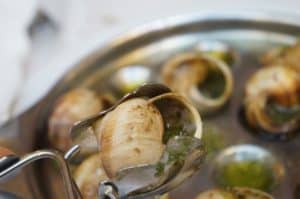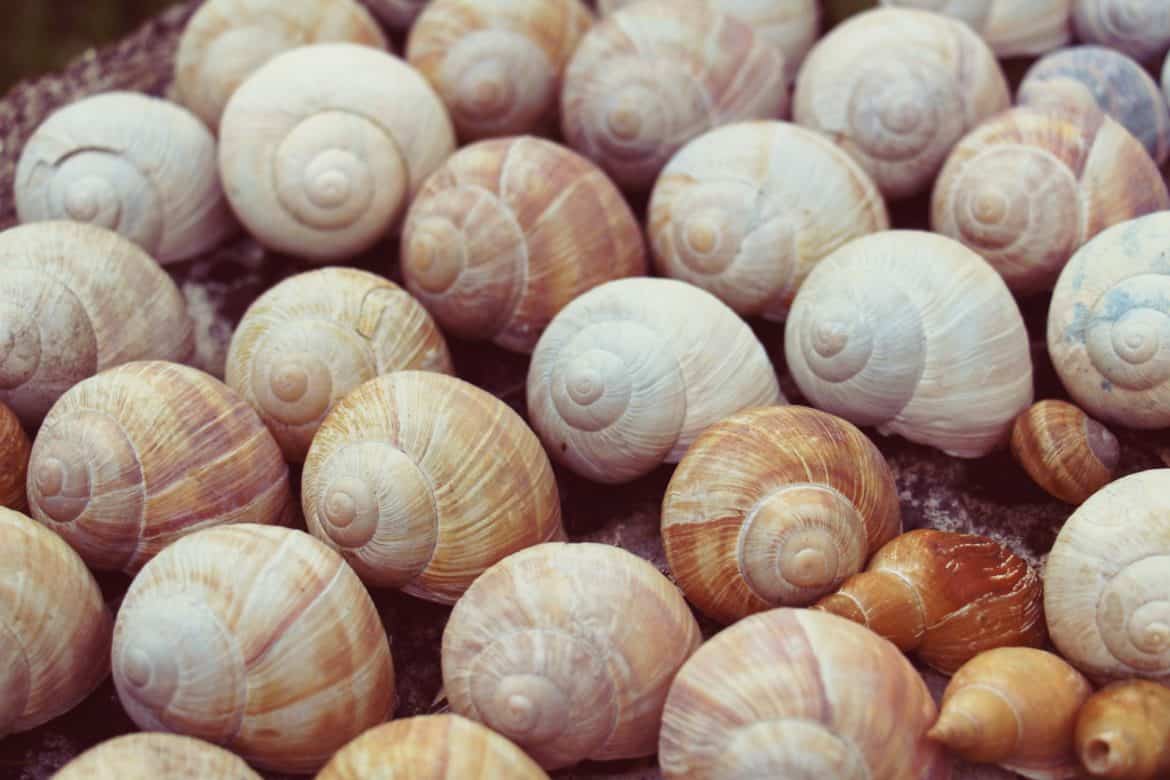In the realm of French cuisine, escargot emerges as a distinctive emblem, capturing the essence of the nation’s culinary sophistication. Esteemed for its unique flavor, the dishe bridges the gap between France’s storied culinary past and the present-day gastronomic scene. This dish, a celebrated delicacy, invites food lovers to embark on a flavorful journey through the heart of French dining culture.
This esteemed dish, carefully prepared using land snails, transcends its role as mere fare to embody the French art de vivre. Every step, from its meticulous preparation to its thoughtful consumption, reflects a deep respect for food as an integral part of life. It’s an invitation to enthusiasts everywhere to delve into a culinary experience that does more than satiate hunger—it enriches the soul, connecting diners to the very essence of French tradition and elegance.
A Deeper Look at the History of Escargot
The history of escargot is as rich and layered as the dish itself, with roots extending back to ancient times. This culinary tradition, now synonymous with French cuisine, began long before France even existed as a nation.
Historical records and archaeological findings suggest that the consumption of snails dates back to prehistoric times. However, it was the Romans who first recognized escargot as a delicacy, cultivating snails in the first gastropods farms. These early connoisseurs savored snails, preparing them with milk and wine to enhance their flavor.
In France, the popularity of the dish soared during the Renaissance, becoming a staple at lavish banquets in the royal court. Kings and queens relished this exquisite dish, further cementing its status within French culinary traditions. It was during this era that escargot began to be associated with sophistication and the art of fine dining.
The Burgundy region of France is particularly renowned for its escargot, contributing the famous “escargots à la Bourguignonne” to the world. This preparation, featuring snails bathed in a sumptuous garlic and parsley butter, epitomizes the elegance and complexity of French cuisine. The dish’s enduring popularity is a testament to the timeless appeal of escargot and its significance within the gastronomic landscape.
Today, escargot continues to be celebrated in France and around the world, not only for its unique taste but also for its cultural significance. It represents a connection to the past, a celebration of French gastronomy, and a reminder of the country’s rich history and traditions in the culinary arts.
Preparing Escargot: Tradition Meets Taste

At the foundation of this esteemed dish lie simple yet premium ingredients: land snails, garlic, parsley, and butter. Combined, these elements form a complex mix of flavors, exemplifying the rich taste profile achievable through time-honored cooking methods.
The process commences with the careful selection of the finest snails, highlighting the pivotal role of ingredient quality in French gastronomy. These snails then undergo an extensive cleaning regimen, a crucial step to ensure their purity and enhance their natural flavors. Following this, they are introduced to a sumptuous mixture of garlic and parsley butter, a concoction that serves as the dish’s flavorful cornerstone. This butter, both opulent and fragrant, envelops the snails, enriching them with a robust and nuanced taste.
The culmination of this culinary endeavor is the gentle baking of the snails, each nestled within its shell, generously enveloped in herbed butter. This deliberate method of preparation guarantees that the escargot retains its moisture, resulting in a dish that is both tender and richly flavored. As they are carefully baked, the snails absorb the aromatic essence of the butter, emerging as a refined embodiment of French cuisine’s sophisticated palate.
Through each step, from the initial selection to the final presentation, the preparation of escargot marries tradition with taste. It’s a culinary ritual that not only showcases the depth of French cooking but also invites diners to partake in a timeless dining experience, one that celebrates the elegance and richness of French gastronomy.
The Diversity of Escargot: Types and Traditions

The realm of escargot showcases a breathtaking diversity that also reflects the diversity of French culinary art. Leading the parade of these cherished varieties is the Helix pomatia, also renowned as the Burgundy snail. Esteemed for its substantial size and exceptional flavor, this variety has become the gold standard in the escargot world, offering a luxurious texture and a depth of taste that continues to captivate connoisseurs.
Equally prized, though on a more delicate scale, is the Helix aspersa, affectionately known as the petit-gris. Smaller in stature but no less significant in the culinary landscape, its nuanced flavor and soft flesh have secured its place in the hearts of chefs and diners alike, presenting a slightly different yet equally authentic escargot encounter.
Crossing borders and expanding the escargot horizon, the Achatina fulica, a giant African snail, introduces an element of culinary adventure. While it strays from the traditional path, its impressive size and comparable taste have inspired a blend of innovation and tradition, incorporating global flavors into the storied French cuisine.
The wide variety of escargot extends into the heart of France’s regions, each contributing its own unique spin on this classic dish. From the beloved escargots à la Bourguignonne, a symphony of snails and garlic-parsley butter, to the robust escargots à la bordelaise of Bordeaux, where snails bask in a hearty broth of meat and wine, these regional specialties mirror the diverse culinary heritage of France. Such variations not only highlight the adaptability of escargot but also celebrate the local ingredients and flavors that define the gastronomic identity of each French region.
The Dining Experience

Savoring escargot transcends the mere act of eating, embodying an experience rich in tradition and communal joy. This quintessential French delicacy serves as a focal point for gatherings, where the process of dining is as valued as the cuisine itself. In France, the enjoyment of escargot epitomizes a leisurely approach to meals, mirroring a broader cultural appreciation for taking the time to relish each bite and cherish the company of others.
As friends and family convene around the dining table, the eating of escargot becomes a ritual, marked by the use of specialized utensils crafted for the sole purpose of extracting the snail’s tender flesh. This practice not only enhances the culinary experience but also strengthens bonds between diners, fostering a warm atmosphere of camaraderie. The act of sharing escargot, passing dishes, and engaging in lively conversation transforms the meal into an event to remember.
Beyond the intimate setting of home dining, escargot holds a place of honor at various festivals and culinary celebrations across France. These events underscore the snail’s significance beyond its taste, heralding it as a symbol of the nation’s rich gastronomic heritage. Attendees of such festivals are treated to a diverse array of escargot preparations, each telling the story of its regional origins and the creative flair of local chefs. Through these communal celebrations, escargot serves as a culinary ambassador, inviting both locals and visitors alike to explore the depth and diversity of French cuisine.
Embark on a Culinary Adventure
As we’ve journeyed through the history, preparation, and communal enjoyment of escargot, the depth and diversity of French cuisine have unfolded before us. Escargot is an experience, offering a taste of France’s gastronomic excellence and the warmth of its dining culture.
For those inspired by the allure of French cuisine and eager to dive deeper into its culinary wonders, there’s no better way than to experience it firsthand. We invite you to join us on our award-winning food tours in France. Discover the flavors, traditions, and stories that make French cuisine beloved worldwide.
